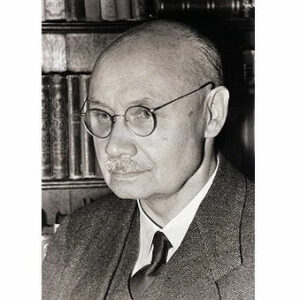Otto Diels, or Otto Paul Herman Diels, was a German chemist who won the Nobel Prize in chemistry for inventing a method for synthesizing cyclic organic compounds. This was referred to as the ‘diene synthesis’ or ‘Diels-Alder reaction. He shared the Nobel Prize with another scientist, Kurt Alder, who co-developed the process with him. His research resulted in the development of synthetic plastics and rubber. His initial research focused on inorganic chemistry, where he discovered the highly reactive compound known as ‘carbon suboxide.’ He later broadened his research to include organic chemistry. His method of removing hydrogen atoms from cyclic organic compounds aided in the synthesis of plastics and rubber but also served as a valuable tool for deciphering the complicated chemical structures of a series of steroids. He was successful in dehydrogenating cholesterol with the aid of selenium, resulting in the formation of steroids with a skeletal structure. During his time at the ‘University of Kiel,’ he collaborated with Kurt Alder to develop the ‘Diels-Alder reaction,’ which enabled the low-cost synthesis of unsaturated cyclic organic compounds, alkaloids, and insecticides without the use of a catalyst, reagent, high temperature, or pressure.
Childhood & Adolescence
Otto Diels was born in Hamburg, Germany on January 23, 1876. His father, Hermann Diels, was a professor of classical philology at the University of Berlin. Bertha Dubell, his mother, was the daughter of a district judge.
Ludwig and Paul, two of his brothers, became professors of botany and Slavic philology, respectively. When he was two years old, his family relocated from Hamburg to Berlin, where his father accepted a position as a university professor.
He attended the ‘Joachimsthalsches Gymnasium’ in Berlin from 1882 to 1895. In 1895, he enrolled at Berlin’s University of Applied Sciences to study chemistry and other sciences. In 1899, he earned a doctorate from the university.
Career of Otto
He was appointed an assistant at the University of Berlin’s Institute of Chemistry immediately after graduating in 1899.
He rose quickly through the ranks, becoming a lecturer in 1904 and then a professor in 1906. He discovered ‘carbon suboxide’ in 1906, which is the acidic anhydride form of malonic acid.
He determined the chemical composition and physical properties of this extremely reactive substance. The knowledge of its chemical structure aided him in comprehending the composition of various carbon oxides.
He was appointed Head of the Chemistry Department at Berlin University in 1913 and promoted to full professor in 1915.
In 1914, he was appointed associate professor at the Royal Friedrich Wilhelm University’s Chemical Institute in Kiel.
In 1916, he was appointed Professor and Director of the Institute of Chemistry at the Christian Albrecht University of Kiel, where he remained until his retirement in 1945.
He pioneered the use of selenium as a reagent for hydrogen atom removal from hydroaromatic compounds in 1927. He devised a method for selectively removing hydrogen atoms from the molecules of certain organic compounds using metallic selenium, resulting in a completely new structure.
He and one of his students, Kurt Alder, invented the ‘Diels-Alder reaction’ in 1928, which enabled him to synthesize a large number of organic compounds. Simple ‘dienes’ such as ‘butadiene’ can be converted into cyclic ‘dienes’ in this experiment, resulting in the formation of new organic compounds.
This method may be used to synthesize novel polymers, alkaloids, and plastics. This was his most significant achievement, and it earned him the Nobel Prize.
During this time period, he was elected to the ‘Bavarian Academy of Sciences’ and the scientific academies of Gottingen and Halle, and was named Emeritus Professor in 1945.
The Chemical Institute was completely destroyed by Allied air raids at the end of the Second World War. He was forced to resign in September 1944 and was granted retirement permission in March 1945.
In 1946, he agreed to continue as director of the Chemical Institute operating out of makeshift quarters.
Significant Works of Otto
Otto Diels wrote and published ‘Einfuhrung in die organische Chemie’ in 1907; by 1962, it had been reprinted nineteen times. It is one of the most widely used textbooks in organic chemistry.
His articles have appeared in a variety of scientific journals and magazines, including the ‘Liebigs Annalen der Chemie’.
Awards and Accomplishments
Otto Diels was awarded a gold medal at the 1904 International Exhibition in St. Louis, Missouri, United States of America.
In 1931, the ‘Society of German Chemists’ presented him with the Adolf von Baeyer Memorial Medal. In 1946, the ‘Medical faculty of Christian Albrecht University’ bestowed upon him an honorary doctorate.
In 1950, he was awarded the Nobel Prize in chemistry. He was presented with the ‘Grosskreuz des Verdienstordens der Bundesrepublik Deutschland’ in 1952.
Personal History and Legacies
He married Paula Geyer in 1909 and the couple had three sons and two daughters. During World War II, he lost two of his sons on the eastern front.
His home was also leveled during the final stages of World War II by Allied bombing. On March 7, 1954, Otto Diels died of heart failure in Kiel, West Germany, which is now a part of unified Germany.
Estimated Net Worth
The net worth of Otto is unknown.
Trivia
Otto Diels was a music and book enthusiast who enjoyed traveling. He was also an avid mountaineer in his youth.


